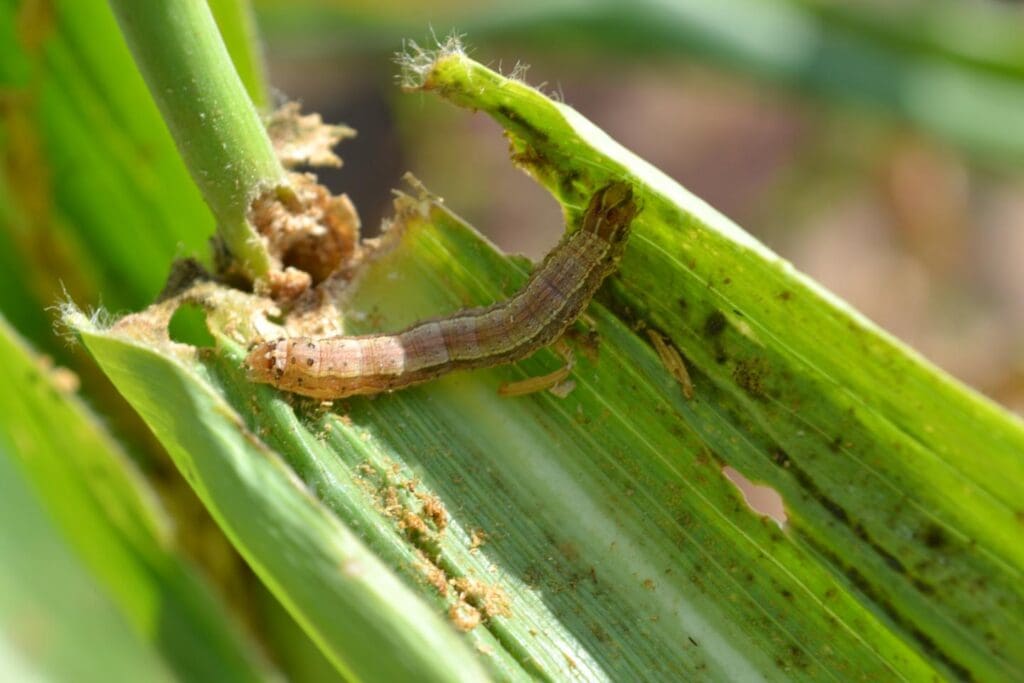Treatment For Fall Armyworms
Read MorePosted on: Jul 22, 2021Luis M Pérez
The fall armyworms are a common pest of Bermudagrass, Ryegrass, St. Augustine and Zoysia, and many other crops in north Texas. Armyworms are small (1/8 inch) at first. Treatment for fall armyworms is imperative. The fall armyworm causes minor plant damage, and as a result, infestation often goes unnoticed.
The Larve feed for 2-3 weeks and fully-grown large worms are about 1 to 2 inches long. Armyworms have an immense appetite; they also move quickly and reproduce in extremely high numbers. Therefore, they will destroy an entire lawn quickly. In most cases, if you find you have an armyworm problem, it is already too late. So, immediate, preventive treatments are recommended.

Treatment For Fall Armyworms
Early detection and treatment are the keys to control an infestation of fall armyworms. This is because the damage caused by armyworms is rapid and severe. The most severe damage occurs when armyworms attack during hot, dry weather.
It is essential to watch for moths and damage. Armyworms do not survive freezing temperatures. However, adult armyworm moths sometimes ride storm fronts into the North. Egg-laying females prefer to attach masses of eggs to tree leaves. Armyworms are surface feeders and are controlled by insecticides. When identified early enough, the damage can be contained. However, when left untreated, they can damage the entire lawn. If you think you have an armyworm problem, get the lawn treated ASAP.
Natural Ways To Manage Armyworms
Mow the lawn. Trimming your grass short is perhaps the best way to discourage the presence of armyworms. So consider mowing your lawn a bit shorter than you usually would, and keep it groomed.
Water the grass. Watering your grass, especially when done right after mowing, also causes the fall armyworm to move on to other lawns. Develop a regular watering routine, and remember to also water your grass right after mowing.
While these natural methods are helpful, they are not a replacement for chemical treatment.
Armyworm Identification
Look for armyworms and/or droppings. Look under your plants for armyworms and signs of their frass (droppings). You may also find larvae hiding under plant debris. For example, if you are growing barley or wheat, you may find worms inside the heads.
- Newly hatched armyworms may have no distinguishing marks, but older armyworms will be brown with yellow stripes or green light stripes.
- They have a marking on the head that looks like a reverse Y.
- Armyworm droppings resemble black pepper.
- Armyworm moths can lay up to 2,000 eggs that hatch in two to three days, according to a 2019 report by Allen Knutson, Ph.D., AgriLife Extension entomologist, retired.
- They move quickly, and they can look like the lawn is moving when there is a high population of armyworms.

Points To Remember: Fall Armyworms
A common pest in Bermuda and Ryegrass, and they also affect St Augustine and Zoysia.
Small at first 1/8 inch.
They are called armyworms because they travel in groups and move through quickly.
Hard to spot in the beginning, and as a result, a large infestation occurs.
Larve feeds for 2-3 weeks, and when fully grown, they are 1 to 2 inches long.
They move quickly and reproduce in large numbers.
In most cases, if you find armyworms, it is too late.
Early detection and treatment are key to control the infestation of fall armyworms.
The most severe damage occurs when armyworms attack during hot, dry weather.
It is essential to watch for moths and damage.
Females lay over 2,000 eggs.
Want To Learn More Or Have Questions?
For more information on armyworms, please get in touch with our Lawn Care Expert, Luis Perez, via email at luisp@doctorgreen.com.

